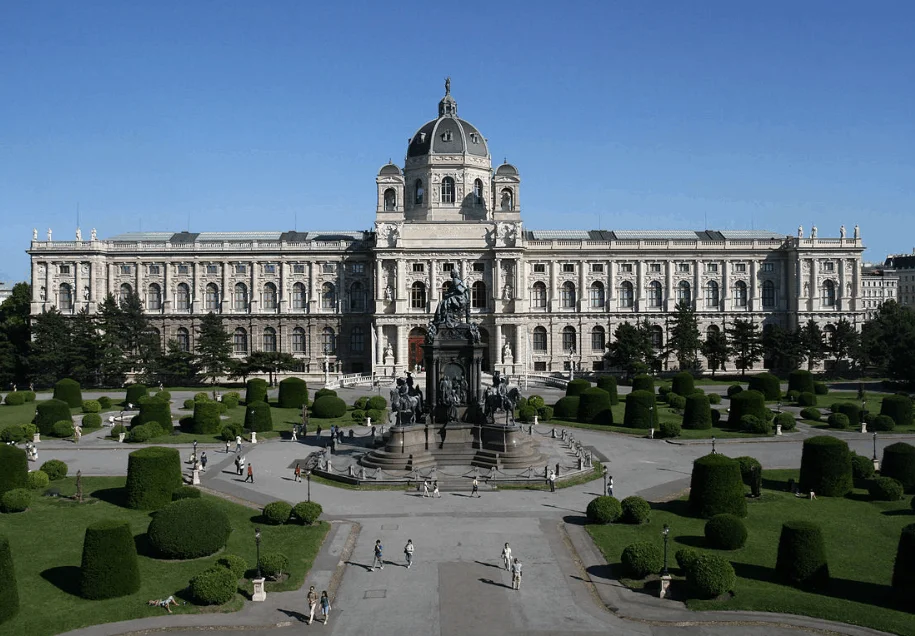This painting has a very significant meaning, hence its alternative title, “The Allegory of Painting.” It was created at the end of the Dutch Golden Age by one of the most famous Dutch painters that this country has ever produced, Johannes Vermeer (1632-1675).
Let’s take a closer look at some interesting facts about The Art of Painting, one of the artist’s most famous paintings.
1. It’s considered to be his most important work
The Art of Painting is also known as “The Allegory of Painting” or “The Artist in His Studio.” It depicts the painter, who is most possibly Vermeer himself, as he sits in front of his easel as he paints a girl wearing a blue dress.
While Vermeer’s “Girl With a Pearl Earring” is definitely his most famous work, The Art of Painting is considered to be his most important work and one of the most famous Baroque paintings. Many critics see it as an allegory that comments on the role of artists in society.
2. It’s one of Vermeer’s largest paintings
Apart from being considered one of his finest and most important works of art, it’s also one of his largest. The Allegory of Painting has dimensions of 120 × 100 centimeters (47 × 39 inches).
His work “Christ in the House of Martha and Mary” is Vermeer’s only bigger painting, making this one his second-biggest painting in his entire oeuvre.
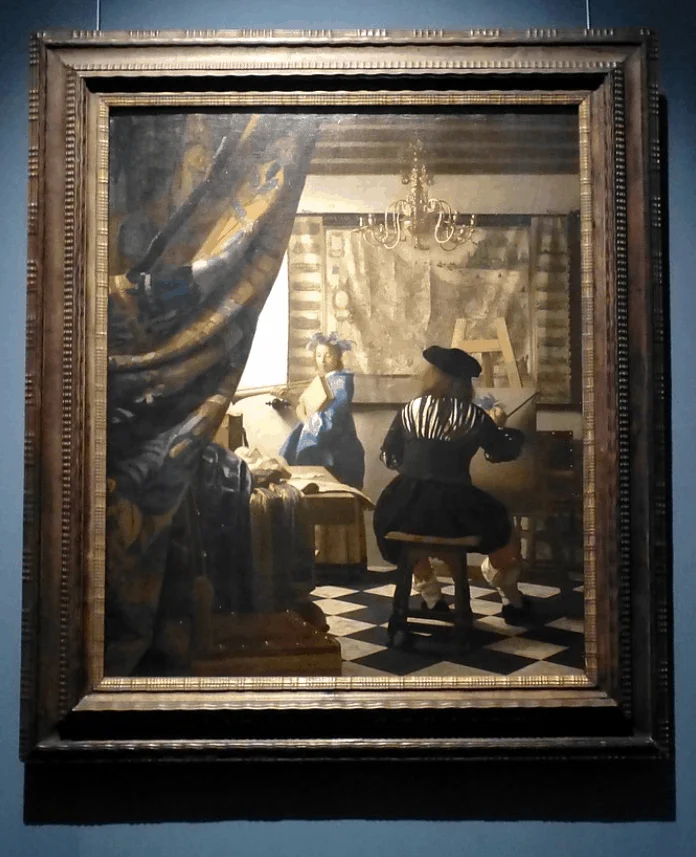
3. The painting was signed by Vermeer
The Art of Painting is one of the 25 paintings that Vermeer actually signed. The location of the signature isn’t the most common one though, as it’s signed just right of the girl.
The signature reads: “I [Oannes] Ver. Meer“
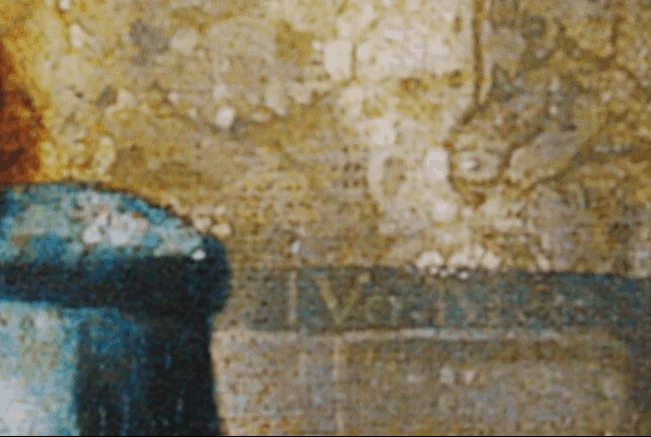
4. It’s not clear when exactly it was painted
Even though the painting was signed by Vermeer, he didn’t include the date. So it’s unclear as to when exactly it was painted.

Considering all opinions, the painting was created somewhere between 1665 and 1675, with most experts believing it was painted between 1665 and 1668.
5. Vermeer never sold The Art of Painting
One of the most interesting facts about The Art of Painting is that Vermeer never sold the painting. This includes the period at the end of his life when he was already in serious debt following the “Disaster Year” of 1672.
The fact that the painting was dear to Vermeer is further emphasized by the actions of his widow. In 1676, the year following Vermeer’s death, she bequeathed it to her mother, Maria Thins, in an attempt to keep it in the family.
The creditors didn’t fall for this plot and it eventually ended up being sold in a public auction at the Guild in Delft on March 15, 1677.
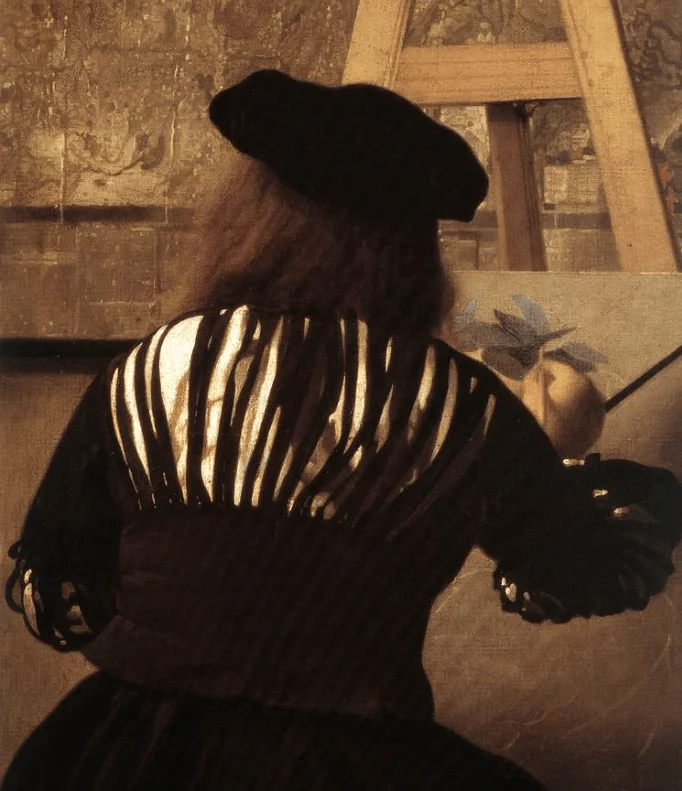
6. It’s possible that the model was his daughter
So who is the mysterious girl who is looking down as she sits as a model for the painter? Some historians believe it was his daughter, which obviously would have given the work an extra dimension for Vermeer.
Could this be the reason he and his widow tried to hold onto it, no matter what?
Regardless of who the subject really is, some experts believe he kept it in his studio as a “showpiece” that he could exhibit for potential clients. After all, in 1663 he was visited by French art collector Balthasar de Monconys who didn’t have a painting on display at the time.
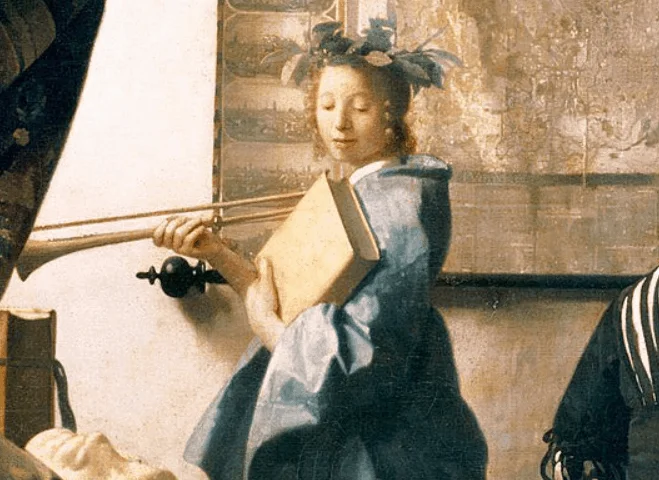
7. The Art of Painting fully displays Vermeer’s talent
Vermeer is famously known for his excellent use of lighting and The Art of Painting is the perfect example of this. Each element in the painting reflects the light in a different way, making it the most accurate use of lighting in any painting in history.
This was Vermeer’s ultimate talent and this painting is the ultimate showcasing of it.
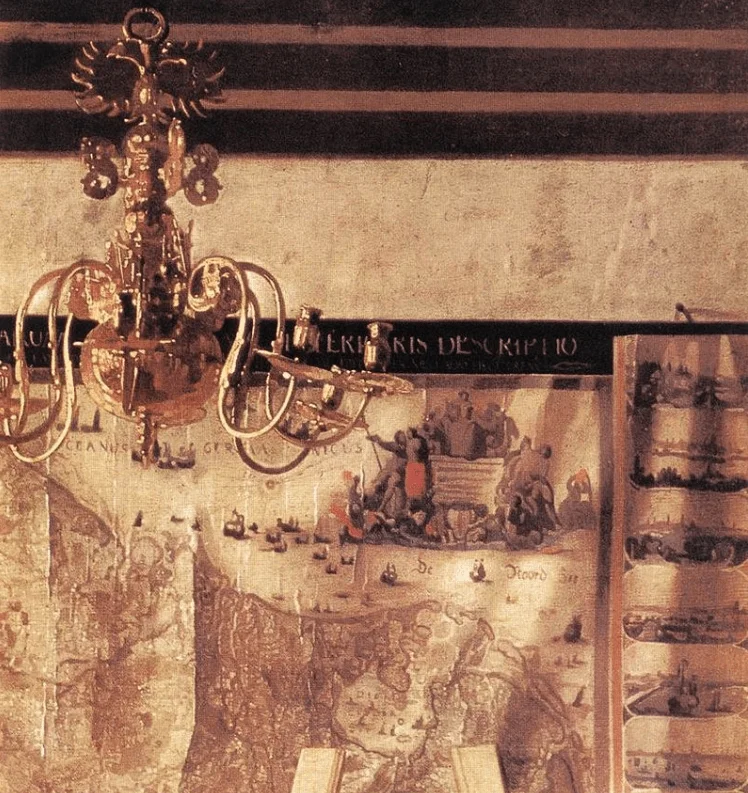
8. Was this auctioned painting “The Art of Painting?”
After the painting was publicly sold in the year 1677, it’s not exactly sure what happened to it. This is for the simple reason that it’s unknown who bought it at the auction in Delft.
There was a painting sold which was described as: “Portrait of Vermeer in a room with various accessories.”
If this was the case, then we can be assured that Vermeer indeed painted himself while he was working on one of his masterpieces, and it’s very likely that the subject was his daughter as well.
9. The painting moved to Austria in 1813
After more than a century of going unnoticed and eventually ending up in the hands of a Dutch-born Austrian diplomat named Gottfried van Swieten, it eventually ended up in Austria.
We know for sure because it was bought for 50 florins by the Bohemian-Austrian Count Rudolf Czernin. The painting was subsequently put on display at the Czernin Museum in Vienna.

10. Nobody knew it was a Vermeer until 1860
One of the most remarkable facts about The Art of Painting is that nobody actually knew it was a Vermeer until it was discovered in the year 1860. Nobody actually knew Vermeer was until the late 19th century!
Before the discovery, which was made by German art historian Gustav Friedrich Waagen, the painting was assumed to be one of Vermeer’s contemporary Pieter de Hooch. After all, the painting contained a forged signature of de Hooch.
The entire catalog of Vermeer’s paintings was created by French journalist Thoré-Bürger who became interested in Vermeer’s paintings after seeing “A View of Delft” in 1842.
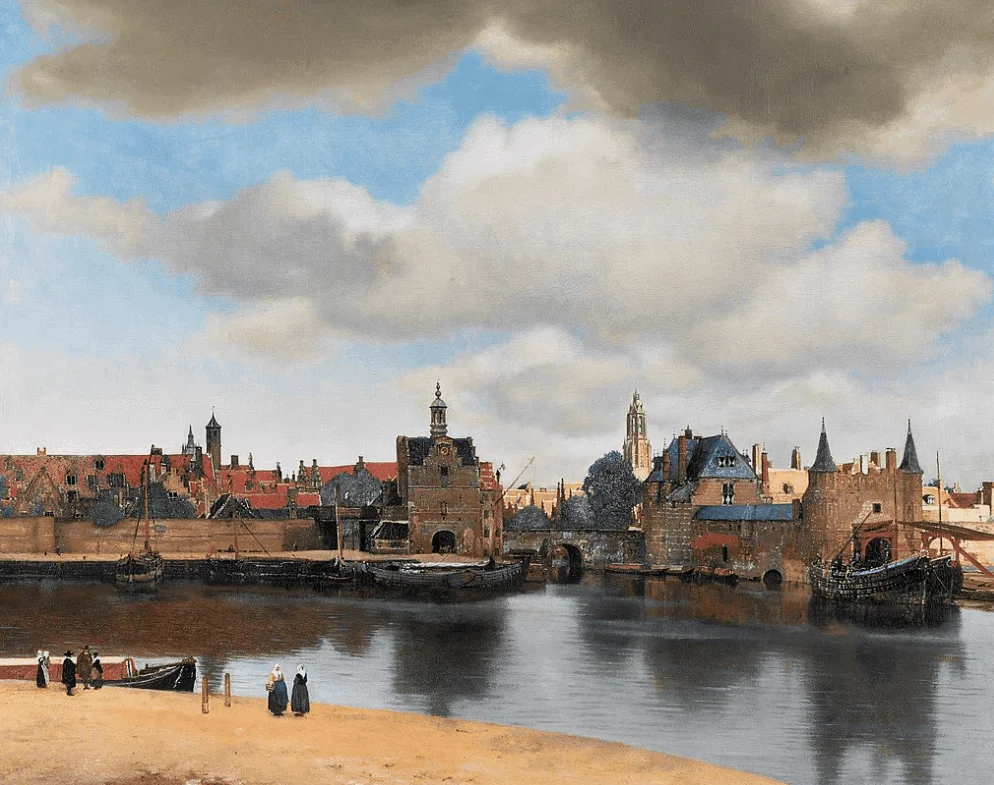
11. Hitler bought The Art of Painting during World War II
It’s no secret that Adolf Hitler was an art enthusiast. Another one of the remarkable facts about The Art of Painting is that Hitler himself bought the painting for 1.82 million Reichsmark through his agent, Hans Posse on November 20, 1940.
He bought it so it could be displayed at the Linzer Museum, an unrealized art gallery in Hitler’s hometown of Linz in Austria.
Many historians believe Hitler was fascinated by the painting because of the double-headed eagle on top of the chandelier, a symbol of the Habsburg Holy Roman Empire.

12. The painting was rescued by being held in a salt mine
In a remarkable twist of events, Germany lost the Second World War and the painting had to be saved from bombings by the allied forces, together with numerous other works of art that were acquired by the Nazis.
The painting was saved because it was brought to a salt mine near Altaussee in 1945, a small town in Austria. It was then escorted to Vienna by Andrew Ritchie, chief of the Monuments, Fine Arts, and Archives program.
A lot of art was saved this way, including one of the finest masterpieces by Johannes Vermeer!

13. Salvador Dalí created a surrealistic reference to The Art of Painting
In 1934, famous Spanish surrealist painter Salvador Dalí created a painting that was inspired by Vermeer’s “The Art of Painting” called “The Ghost of Vermeer of Delft Which Can Be Used As a Table.”
The painter who is best known for his masterpiece “The Persistence of Memory” used his typical style to represent Vermeer as a table.
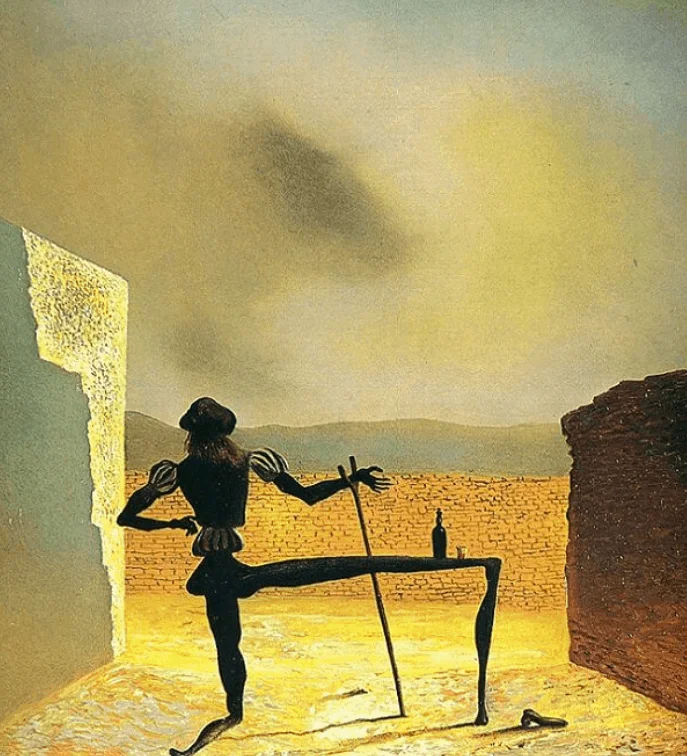
14. It’s on display in the largest museum in Austria
So where can we admire Vermeer’s masterpiece?
After the war, the Czernin family did whatever they could to try and reclaim the work that they had sold, stating that they were pressured by Hitler to sell it. This was rejected multiple times.
It wasn’t until the year 1958 that the claim was ultimately rejected and the painting was moved to the permanent collection of the Kunsthistorisches Museum in Vienna, the largest art museum in Austria.
